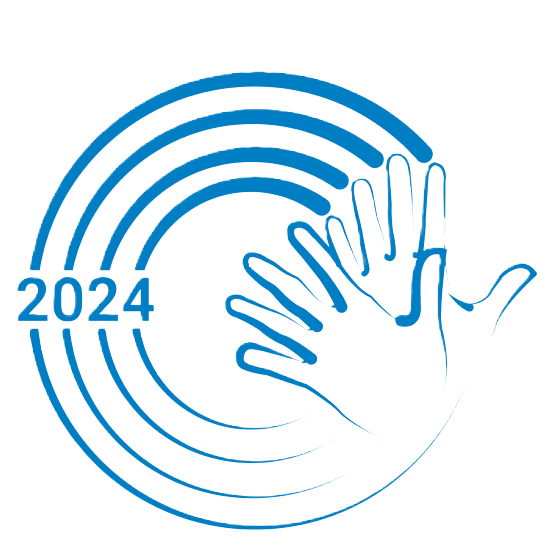International Day of Sign Languages
International Day of Sign Languages
On 19 December 2017, the UN General Assembly declared 23 September as International Day of Sign Languages (IDSL).
Sign languages
According to the World Federation of the Deaf, there are approximately 72 million deaf people worldwide. More than 80% of them live in developing countries. Collectively, they use more than 300 different sign languages.
Sign languages are fully fledged natural languages, structurally distinct from the spoken languages. There is also an international sign language, which is used by deaf people in international meetings and informally when travelling and socializing. It is considered a pidgin form of sign language that is not as complex as natural sign languages and has a limited lexicon.
The Convention on the Rights of Persons with Disabilities recognizes and promotes the use of sign languages. It makes clear that sign languages are equal in status to spoken languages and obligates states parties to facilitate the learning of sign language and promote the linguistic identity of the deaf community.
UN resolution on IDSL
The proposal for the Day came from the World Federation of the Deaf (WFD), a federation of 135 national associations of deaf people, representing approximately 70 million deaf people’s human rights worldwide. The resolution A/RES/72/161 was sponsored by the Permanent Mission of Antigua and Barbuda to the United Nations, co-sponsored by 97 United Nations Member States and adopted by consensus on 19 December 2017.
The choice of 23 September commemorates the date that the WFD was established in 1951. This day marks the birth of an advocacy organisation, which has as one of its main goals, the preservation of sign languages and deaf culture as pre-requisites to the realisation of the human rights of deaf people.
The resolution establishing the day acknowledges that early access to sign language and services in sign language, including quality education available in sign language, is vital to the growth and development of the deaf individual and critical to the achievement of the internationally agreed development goals. It recognizes the importance of preserving sign languages as part of linguistic and cultural diversity. It also emphasizes the principle of “nothing about us without us” in terms of working with deaf communities.
The first International Day of Sign Languages was celebrated on 23 September 2018 as part of the International Week of the Deaf, that took place during on 24-30 September 2018.
The International Week of the Deaf was first celebrated in September 1958 and has since evolved into a global movement of deaf unity and concerted advocacy to raise awareness of the issues deaf people face in their everyday lives.
IDSL 2024 -Sign up for Sign Language Rights
 The UN General Assembly has proclaimed 23 September as the International Day of Sign Languages in order to raise awareness of the importance of sign language in the full realization of the human rights of people who are deaf.
The UN General Assembly has proclaimed 23 September as the International Day of Sign Languages in order to raise awareness of the importance of sign language in the full realization of the human rights of people who are deaf.
The theme for 2024 International Day of Sign languages is "Sign up for Sign Language Rights". As we approach the 20th anniversary of the UN Convention on the Rights of Persons with Disabilities (CRPD), adopted in December 2006, let us strive towards a better implementation of the CRPD at the national level through the linguistic human rights of deaf people. The world will highlight the unity generated by sign languages. Deaf communities, governments and civil society organisations continue their collective efforts - hand in hand - to foster, promote and recognise national sign languages as part of their countries’ vibrant and diverse linguistic landscapes.
According to the World Federation of the Deaf, there are more than 70 million deaf people worldwide. More than 80% of them live in developing countries. Collectively, they use more than 300 different sign languages.
Sign languages are fully fledged natural languages, structurally distinct from the spoken languages. There is also an international sign language, which is used by deaf people in international meetings and informally when travelling and socializing. It is considered a pidgin form of sign language that is not as complex as natural sign languages and has a limited lexicon.
The national sign languages as the key to the inclusion of deaf people in society. National sign languages are full, complex natural languages with the same linguistic properties as spoken languages, including phonetic, phonemic, syllabic, morphological, syntactic, discourse,and pragmatic levels of organisation. They are the mother tongue and the natural languages of deaf children. They are the vector of the inclusion of deaf children both in deaf communities and in society, fostering the building of their own identities and communities.
The Convention on the Rights of Persons with Disabilities recognizes and promotes the use of sign languages. It makes clear that sign languages are equal in status to spoken languages and obligates states parties to facilitate the learning of sign language and promote the linguistic identity of the deaf community. To know more, click here.
Source : United Nations
Last Modified : 9/11/2024
This page provides the information on How do we He...
This topic covers the Information related to Ident...
Provides information about Some Basic Signs in Ind...
This topic covers the information related to Disab...
